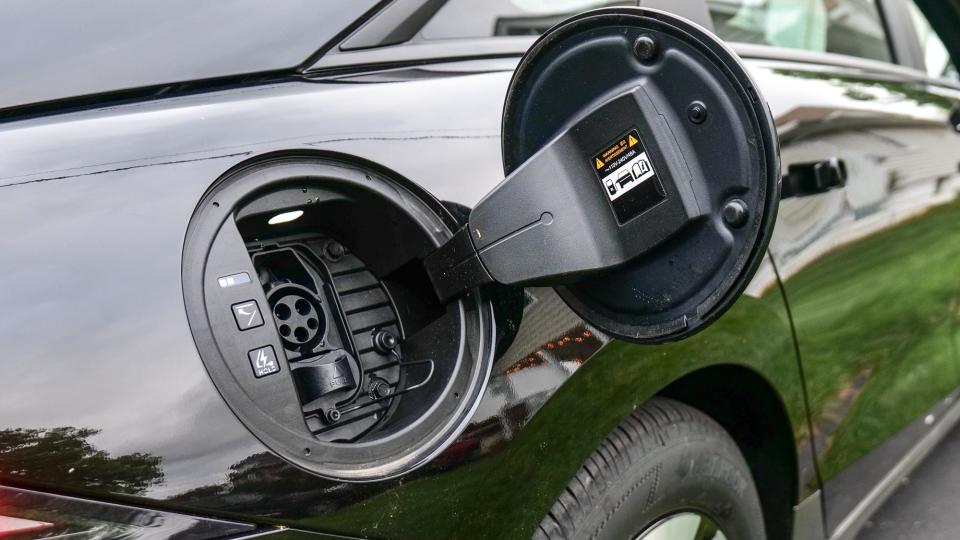I’m long overdue for a new car, but car shoppers have more to consider now than ever before when looking for their next ride. I’ll admit that I’ve been spoiled the last couple of months test driving some of the best electric cars around, like the futuristic looking Kia EV9 and its 3-row seating, but one thing’s clear about most of them: they’re just so expensive.
A recent poll drives this point home, saying that U.S. car buyers are reluctant to buy EVs because of the price disparity between them and gas-powered vehicles — and this is despite the average price of EVs continuing to decline. That’s why I think an alternative worth looking at are hybrids. Anything is better than all-gas powered cars at this point. Unless there’s an immense need for them, like for your job, you should look at hybrids at the very least at this point.
After test driving an Elantra Hybrid for a week, I’m really astounded by how far hybrid cars have come since they were first introduced in the early 2000s. Not only have they become more powerful and efficient since then, but they share a lot of the same tech and conveniences I’ve seen in pricier, more luxurious EVs I’ve driven.
You’ll have a lower upfront cost

Pricing continues to be a roadblock for many consumers thinking about buying an EV. For example, Kelly Blue Book reports that the average price for electric cars in April 2024 was $55,242 — while it’s $44,989 for gas-powered ones. While I’ve explained that EVs present greater long term savings by charging them at home during off-peak electric hours, car shoppers still need to come up with the budget to shell out for an electric vehicle in the first place.
According to the Bureau of Labor Statistics, $48,060 was the median annual wage for all U.S. workers in 2023. Depending on who you talk to, it’s recommended that you should budget between 10% to 15% of your monthly income for a car payment. This calculates to an income of $4,000 per month, which would yield a budget of $400.50 to $600.75 each month for a car payment.
I don’t know any finance options or car loans that would support a 12-year payment plan, but that’s basically how long it would take to pay off an average electric vehicle. I can’t even imagine the interest rate on that type of loan either. And while some EVs qualify for tax rebates that take more off their cost, they still cost more than hybrid models.
Hybrid vehicles thankfully don’t cost that much, which for those who don’t have the disposable income to buy an EV outright, would be much more reasonable to their budget. The Hyundai Elantra Hybrid Limited has a starting cost of $29,450, while a Toyota Corolla Hybrid LE costs less at $23,500. If you’re looking for something bigger, hybrid SUVs like the Toyota Rav4 Hybrid and Kia Sportage Hybrid start at $31,725 and $28,590 respectively.
Greater range


Another major concern for some about EVs is that they don’t have the range for long distance traveling. Many EVs today can get easily over 300 miles with a full charge and they’re becoming more efficient with each new generation. For example, the Hyundai Ioniq 6 and Lucid Air Pure I test drove top out at 305 and 419 miles respectively. The Lucid’s one of the few exceptions that exceed the 400-mile range, but I suspect it’s only going to get better.
But despite these numbers, you’ll still go a lot further with today’s hybrid vehicles. I was able to reach a fuel economy of 50.8 mpg with the Elantra Hybrid Limited, which would calculate to about a range of 558 miles with its 11-gallon fuel tank. Meaning, you’ll be able to travel farther distances non-stop with a hybrid — which is helpful when traveling through rural places across the country.
Fewer pit stops with long distance traveling


As a result, the greater range of hybrid vehicles over EVs means you won’t have to make as many pit stops. If you’re concerned about getting to your destination in the shortest time possible, this is an incentive you might appreciate with hybrid cars. Just think: you can drive straight for 500 miles without stopping.
Meanwhile, most EVs would need a recharge as they approach 300 miles (or before that just in case). In my experience so far, it takes about 30 minutes to get a reasonable charge back into an EV before driving off again. But the other challenge about EVs is that sometimes you might have to wait at a charging station before one becomes available for you to use. All of this adds up to longer wait times, which could be a dealbreaker for some folks.
Don’t count out EVs just yet


While I’ve detailed the advantages that hybrids have over EVs, it’s only a matter of time before EVs outperform hybrid cars. I mentioned how price was the biggest roadblock, but the prices on EVs have been declining. In fact, I’m hopeful that by the time I’m ready to hand in the keys of my 15+ year old Corolla, the Kia EV3 will be available stateside.
Why that one? Well, not only does it share many of the same qualities that made me fall in love with the $74,000 priced EV9 I drove, but it’s going to be much more affordable. It’s speculated that the Kia EV3, a compact-size SUV, will turn out to be $35,000 — which has an estimated range of 300 miles. Sure, the range could be better, but I suspect that the next generation of EVs will deliver longer range and faster charging
More from Tom’s Guide
Source Agencies

